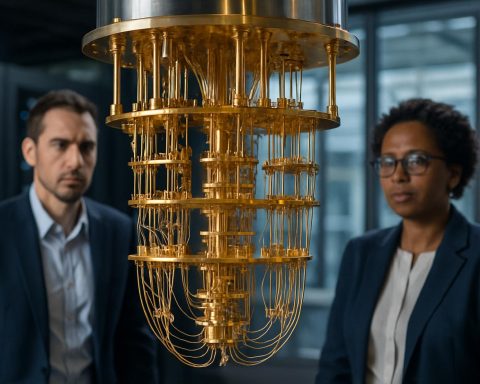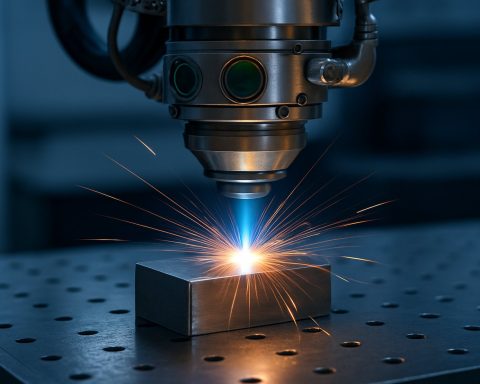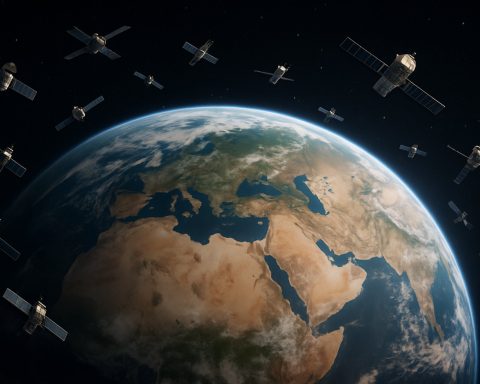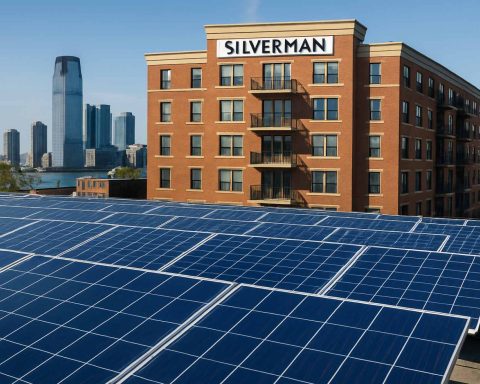- CATL is the world’s leading lithium-ion battery manufacturer, powering electric vehicles (EVs) from top brands like Tesla and BMW.
- China’s strong policies and incentives for renewable energy have propelled CATL’s rapid rise and global dominance.
- CATL’s innovations, especially in lithium-iron phosphate (LFP) battery technology, have improved safety, affordability, and reduced reliance on scarce metals.
- The company supplies nearly one-third of all EV batteries worldwide, shaping the global shift to electric mobility.
- CATL is expanding into large-scale energy storage, supporting the integration of wind and solar power for cleaner energy grids.
- The ongoing advancements by CATL are helping accelerate the global transition to sustainable energy and a new electrified era.
Rising from the haze above Ningde’s gentle hills, a colossal glass structure slices through the skyline—a gleaming testament to transformation, ambition, and raw industrial might. Within its curving, battery-shaped façade, thrums the nerve center of Contemporary Amperex Technology Co. Ltd., better known as CATL. While its name might still slip under the radar in the West, CATL’s influence charges across continents, shaping the future of mobility and energy storage from the heart of China’s southeast coast.
Step beyond the imposing gates, and it becomes obvious: this is no ordinary factory. Engineers crisscross polished corridors, surrounded by laboratories and production lines that churn out battery cells by the millions. Founded just over a decade ago, CATL has surged to become the world’s indisputable leader in lithium-ion battery manufacturing. Its technology forms the beating heart of electric vehicles (EVs) from Tesla to BMW, and powers everything from buses in Europe to scooters in Southeast Asia.
Such dominance didn’t happen by accident. China’s strategic commitment to renewable energy paved a superhighway for CATL’s ascent, with the government offering a constellation of subsidies, incentives, and favorable policies. This bold vision aimed to slash the nation’s notorious smog and reduce its reliance on imported oil, all while capturing the frontiers of future industry.
Inside the Ningde headquarters, innovation never sleeps. CATL’s scientists have driven battery costs down and pushed energy density up, making electric cars ever more affordable and practical. The company’s relentless quest for improvement has led to breakthroughs in lithium-iron phosphate (LFP) chemistry—a battery type prized for its safety, longevity, and lack of reliance on scarce, costly cobalt and nickel. As LFP batteries scaled, so too did global adoption, slashing barriers for consumers and manufacturers alike.
Now, CATL’s tentacles stretch around the globe. The company supplies nearly one in every three batteries used in EVs worldwide, cementing its role as kingmaker in the race to electrify transport. Its influence is so vast that automakers jostle for partnerships, eager to secure future supplies as the era of the internal combustion engine slips into history.
But CATL’s ambitions don’t end with cars. The company is pioneering stationary energy storage projects—massive battery farms capable of storing wind and solar energy at scales that could one day power entire cities. In a warming world, this quiet work promises resilience against blackouts and a cleaner grid, sending shockwaves through the energy sector.
The takeaway is plain: As nations strive to meet climate pledges and shift to cleaner technologies, the fortunes of companies like CATL will shape the very fabric of modern life. A new electrified age is not just looming—it is being built, cell by cell, inside the glass-and-steel giant overlooking the hills of Ningde.
For those closely watching the world’s sprint toward sustainability, the contours of this future may very well bear the imprint of CATL’s digital and chemical alchemy—proof that the next industrial revolution has already begun.
The Battery Giant Shaping a Greener Tomorrow: Untold Facts, Trends, and Insider Insights on CATL
CATL & the New Industrial Revolution: Deep Dive Beyond the Glowing Facade
What Else Should You Know About CATL?
Contemporary Amperex Technology Co. Ltd. (CATL) is more than just a battery supplier—it’s the keystone in the global shift towards electrification, not only for passenger EVs but also for commercial vehicles, grid-scale energy storage, and even aviation.
1. Market Leadership & Global Expansion
– World’s Largest EV Battery Supplier: According to SNE Research, CATL commanded a 37% global market share in the EV battery sector in 2023, far ahead of competitors like LG Energy Solution, Panasonic, and BYD.
– Key OEM Partnerships: Besides Tesla and BMW, CATL counts Mercedes-Benz, Hyundai, Honda, Toyota, and Volkswagen among its major clients.
– Manufacturing Footprint: The company has established gigafactories across China and is rapidly expanding into Germany (Erfurt), Indonesia, and Hungary, reinforcing Europe’s and Asia’s EV supply chains.
2. Technology Innovations and Industry-Defining Breakthroughs
– LFP (Lithium Iron Phosphate) Leadership: While the article highlights LFP chemistry, it’s worth noting CATL’s recent introduction of LMFP (lithium manganese iron phosphate) batteries, which further increase energy density and maintain cost advantages, making them a contender for mass-market EVs.
– Sodium-Ion Batteries: In 2021, CATL unveiled the world’s first generation of sodium-ion batteries—cheaper and more stable than lithium-ion, and expected to enter commercial vehicles and stationary storage in 2024-2025.
– CTP (Cell-to-Pack) Tech: CATL’s cell-to-pack (CTP) technology eliminates intermediate modules, boosting EV range and streamlining production. This tech is now being licensed to automakers worldwide.
3. Real-World Use Cases, Hacks, and How-To Steps
– How-To Choose EVs with CATL Batteries: Look for vehicles using LFP batteries for lower cost, greater longevity (over 3,000 charge cycles), and enhanced safety—especially valuable for ride-share, taxi, and fleet operators.
– Stationary Storage: CATL’s commercial ESS (energy storage systems) stabilize renewable energy production; homeowners can pair CATL-powered storage systems with solar arrays for blackout resilience.
– Portable Power: CATL cells are increasingly found in e-bikes, scooters, and portable generators, making high-reliability power accessible for urban mobility and remote areas.
4. Reviews & Comparisons
| Battery Type | Typical Chemistry | Energy Density | Safety | Cost | Lifespan | Applications |
|———————-|——————|—————|———-|———-|———-|———————————-|
| CATL LFP | LiFePO4 | Medium | Very High| Low | 3,000+ | EVs, buses, storage, e-bikes |
| LG/Panasonic NCM | Li-NiCoMnO2 | High | Moderate | Higher | 1,500–2,000 | EVs (premium), electronics |
| CATL Sodium-Ion | Na-ion | Emerging | High | Very Low | TBD | Storage, commercial vehicles |
5. Market Forecasts & Industry Trends
– Explosive Growth: Fortune Business Insights projects the global EV battery market to reach more than $98 billion by 2029, with China remaining the dominant production hub.
– Sustainability Push: CATL is investing in battery recycling technologies and “closed loop” supply chains to recover lithium, nickel, and other metals—a response to mounting environmental scrutiny.
6. Features, Specs, and Pricing
– Energy Density: CATL’s latest LFP batteries now exceed 160 Wh/kg, rivaling older nickel-based cells.
– Cost Per kWh: LFP battery packs are now routinely below $100/kWh, a key threshold for EV price parity with gasoline vehicles.
– Fast Charging: New CATL cells can achieve 80% charge in less than 15 minutes, depending on application and charger capabilities.
7. Security, Sustainability, and Supply Chain Risks
– Material Sourcing: CATL is developing mines and refining capacity in Indonesia (nickel) and expanding upstream partnerships in Africa (cobalt, lithium) and Australia (lithium, minerals).
– Cybersecurity: Growing digitalization brings risks—CATL invests in securing production lines and proprietary tech against industrial espionage and cyberattacks.
– Geopolitical Limitations: US-China trade tensions and emerging “battery decoupling” policies could impact CATL’s access to certain markets, prompting it to localize production abroad.
8. Pros & Cons Overview
Pros:
– Industry-leading safety (especially LFP chemistry)
– Cost-effective mass production
– Broad EV compatibility, from small city cars to commercial buses
– Commitment to recycling and reduced use of controversial metals
Cons:
– Lower energy density (LFP) compared to some NCM batteries
– Geopolitical exposure limiting expansion in North America
– Mineral supply chain still impacted by volatility and environmental concerns
9. Controversies & Limitations
– Labor & Environmental Scrutiny: Like other battery giants, CATL faces criticism regarding labor conditions in parts of its supply chain and the carbon footprint of large-scale mining.
– Dependence on Chinese Policy: The company’s rise was facilitated by government support, which could raise questions about long-term competitiveness if subsidies change.
10. Pressing Questions—Expert Answers
– Will CATL Batteries Make EVs Cheaper? Yes. The falling cost of LFP and sodium-ion batteries is projected to lower EV sticker prices below comparable combustion vehicles by 2025 (source: BloombergNEF).
– Are CATL Batteries Safe? LFP cells are among the safest on the market, with lower fire risk and longer projected working life.
– How Soon Will Sodium-Ion Be Available? CATL and partners forecast initial deployments in grid storage and commercial EVs by late 2024.
Actionable Recommendations and Quick Tips
– If shopping for an EV: Ask the dealer for vehicles with CATL LFP batteries, especially for daily-commute cars or shared mobility.
– Home energy users: Investigate CATL-powered home storage for solar or emergency backup—these systems increasingly offer industry-best performance and safety.
– Investors & Industry Watchers: Keep an eye on sodium-ion and LMFP developments, plus emerging CATL partnerships in Europe and Southeast Asia.
– Sustainability Advocates: Track CATL’s recycling and green supply chain initiatives to gauge the industry’s actual sustainability progress.
The Electrified Road Ahead
As the world hurtles toward mass electrification, companies like CATL aren’t just passengers—they’re driving the change. By blending chemistry, engineering wizardry, and scale, CATL has positioned itself as a linchpin in the quest for carbon-free transportation and energy. Stay informed and empowered—tomorrow’s power is being built cell-by-cell, right now.
Explore more about CATL’s journey and impact at their official site: CATL










